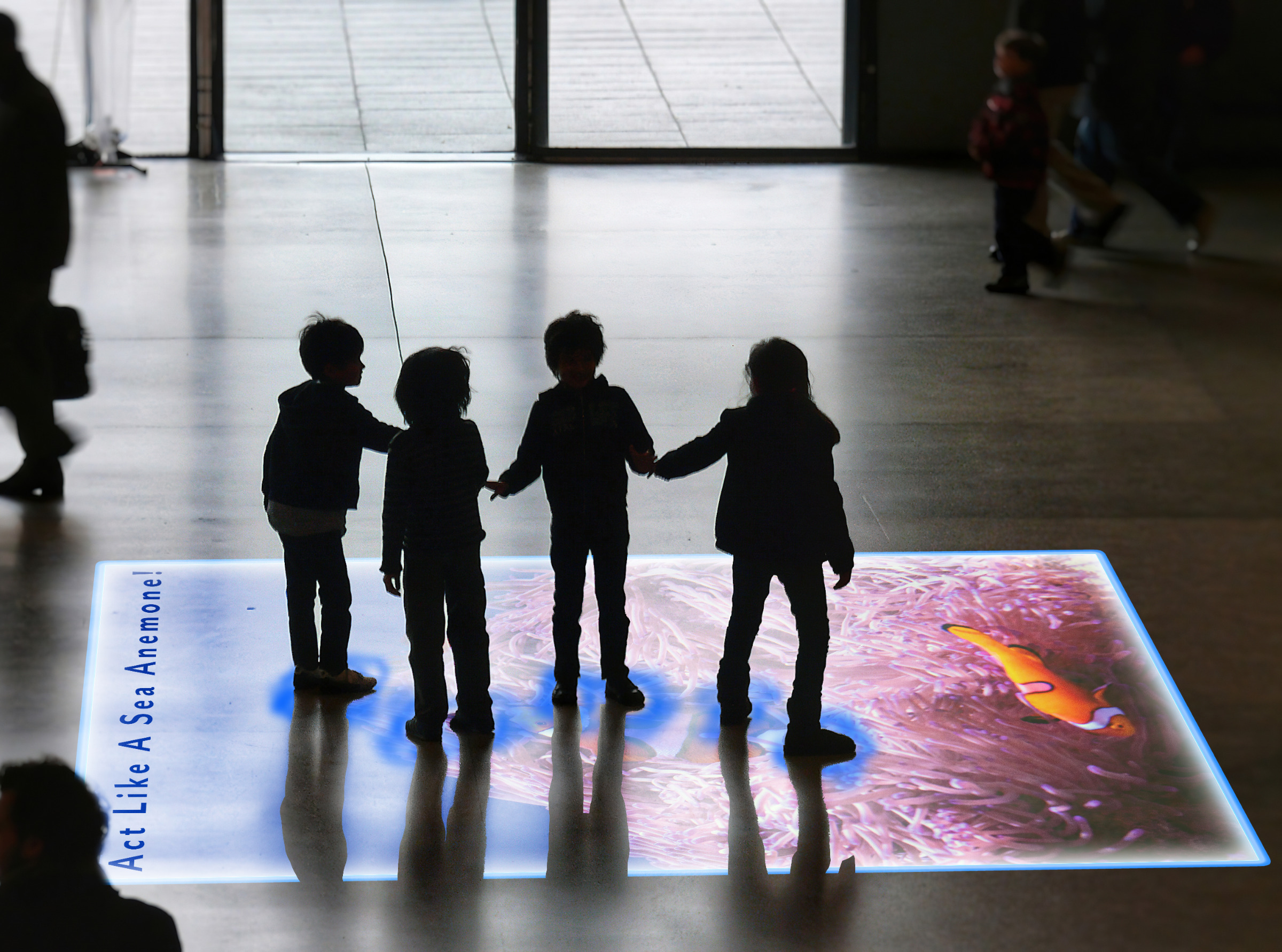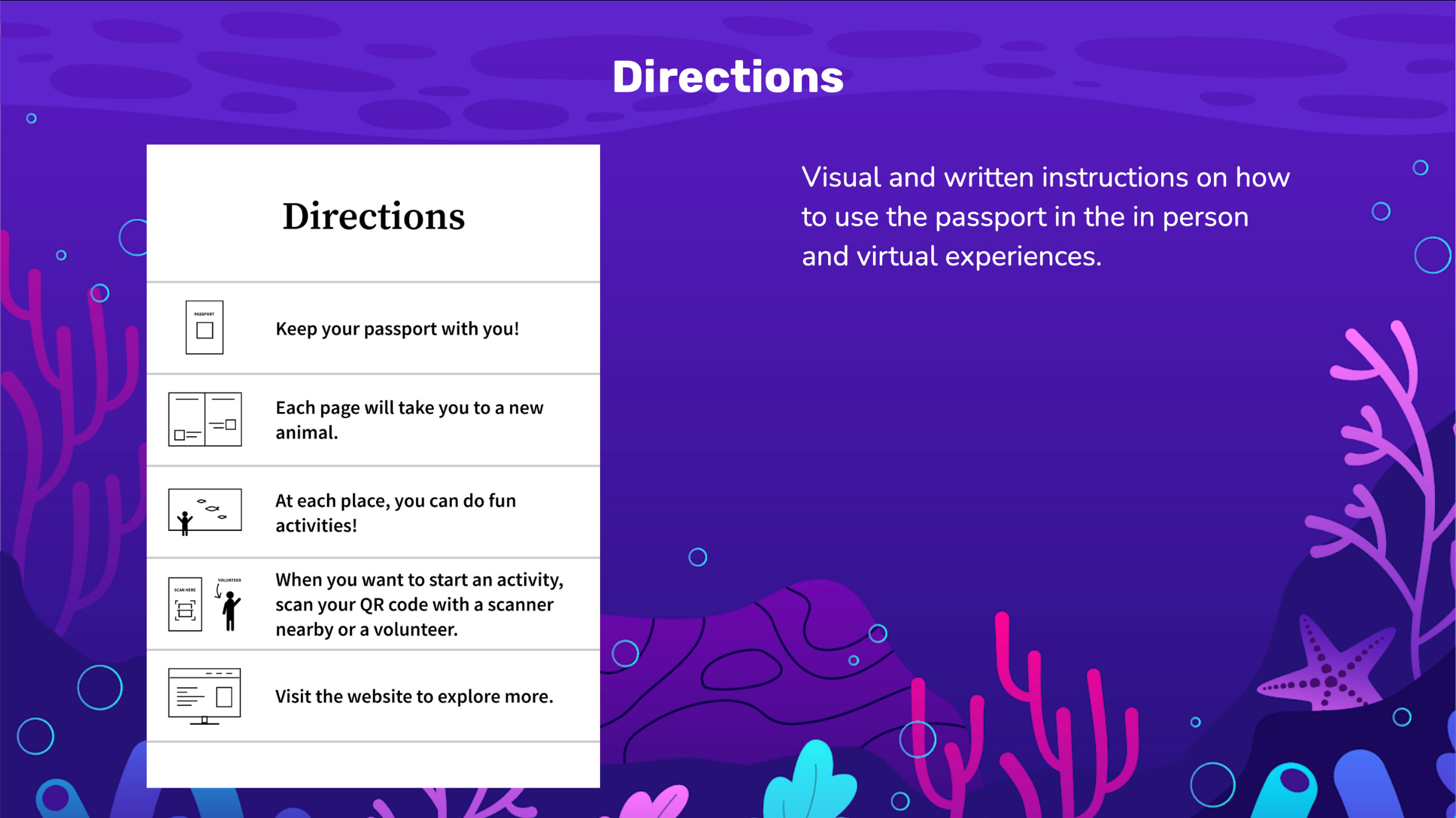Passport Adventures
Background:
Expectation: Develop a project to help foster empathy in patrons of the Woodland Park Zoo or Seattle Aquarium based on their empathy grant guidelines.
Duration: 11 weeks
Team Size: 5
Organization Partner: Seattle Aquarium & Woodland Park Zoo
Contributions:
- Mediator between team and stakeholders
- Passport design creator
This is a school project for a design course at the University of Washington Bothell. The project guidelines were based off the Woodland Park Zoo’s empathy grant that teams could apply for if they wished.
My team developed an in-person experience as well as an accompanying online website. The in-person experience works with the aquarium’s current set up so that it does not take away from the exhibits. Then the website is to help keep children engaged with the aquarium when they are at home. And any extra necessary materials to participate (like the passport) is provided by the aquarium to not add any extra financial strain on patrons of the aquarium.
The Problem
How do we build children’s empathetic muscles and keep them engaged with the aquarium past middle school age?
Hunt Statement
The team developed our individual statements, then brought all the statements together to create this hunt statement. This statement was created to align the team’s goal so that we could reference it down the road in case we felt the project was getting off track and we could realign ourselves.

Research:
For this project’s initial research, the team researched the aquarium’s empathy practices so that we could build off structures that were already in place. As well as conduct employee interviews to get an idea of what is important to the stakeholders. I emailed the different directors of the aquarium to see who would be willing to be a point of contact for us to interview as well as pitch our ideas to in order to receive feedback.
Personas:
Primary:
My team had developed 5 primary archetypes of the children that could be going to the zoo: the animal lover, curious/ developing interest, the typical kid, troubled child and disinterested. From the 5 we decided to focus on 2 primary personas.
Fanny was my original persona that I created, and the team decided to elaborate on her because she was one of the favorites. Because she is excited to learn more about aquatic creatures, she is the ideal consumer of our product.

Alexander was another version of our primary persona. The typical kid/ an average Joe, a child that is not too excited about the aquarium, but is not disinterested, he is a neutral party but will go along for the ride. We expected him to be a more common visitor.

Secondary:
Our secondary personas consisted of teenagers, because that is the age children start to phase out of wanting to go to the aquarium from disinterest. As well as adults/ caregivers because they go to the aquarium for personal dates/ events, or are the ones responsible for bringing children to the aquarium for outings. We recognize them as important parts of the aquarium, but they are more difficult to get engaged in activities. Teens and adults are also more difficult to teach about empathy, they are not the ideal age to start building an empathetic base.
Final Project:
Passport:
The passport will be given free upon entry to the aquarium. Patrons can use the cover’s QR code to access the interactive installations. Each passport will include a personalized ID so that they can connect their progress to an online account on the accompanying website post-visit.
In-Person Experience:
Idea 1: interactive floor

This was my idea that was inspired by the interactive projections I remember inside malls when growing up. I thought this would be good inside of the aquarium because there was a big empty section in the main building. The projectors from the mall were strong enough to project in a high level of light, allowed for interaction without needing any physical touch which is great for our current times with COVID.
Idea 2: name a creature

Another one of my ideas that was inspired by light projections. The reason why this installation was important is because it can highlight smaller creatures that are not as well known, allow kids to learn/ grow a connection to them, and the installation won’t completely block the actual animal exhibit. Patrons are still able to see past the light screen and see inside. But once activated it is fully interactable to introduce a new friend.
Website:
Feedback:
This is the feedback we received from the aquarium’s Director of Conservation Engagement and Learning, Jim Wharton.
- Loved the passport idea because they believe kids like the idea of going on adventures.
- Believed the team used many excellent empathy practices in our exhibit.
- Enjoyed the idea of having an in-person experience, along with an online one to keep patrons connected after/ in between visits (especially since many visitors are from out of town).
- Not sure if stickers are the best prize because they could end up on the aquarium’s glass, but thought there may be a work around.
- For the call to action we should work on making conservation efforts that are within a kid’s control (ie: have a bake sale instead of donating money, help family become more environmentally friendly/ aware).
Takeaways:
- Even though things are intuitive for adults, it does not make it intuitive for a younger audience. When creating a site for kids we should scale down the complexities to make it easier for them to use without an adult’s help.
- Truly taking the time to understand a company’s practices and ideals makes a difference when creating a product for them.
- It seemed to be beneficial to have a base product that can easily be added on to or implemented in other locations.








